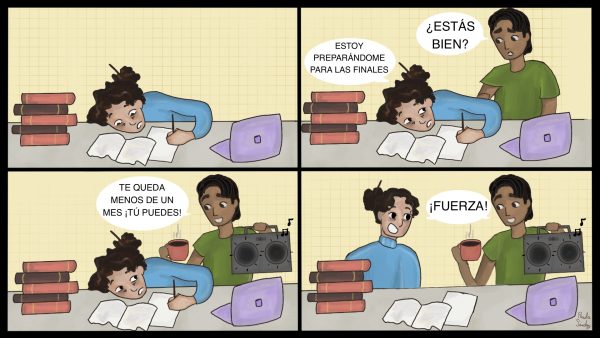Speed Cycle
March 15, 2009
People have always asked Robert Curtis what bicycle racing is like. He gives the same answer every time.
“I always respond by saying to find a buddy that you know pretty well, ask them to kick you as hard as they can in the junk, and in five minutes, after you don’t feel like puking and you’re ready to do it again, then you’re ready to race.” Curtis is the general manager of Bicycle Heaven, a bicycling club in the Chicago area that participates in bicycle races.
There are sanctioned races in Chicago that are well-known and well-publicized like the Chicago Criterium, then there are others like Alleycat races, which are underground bicycle races that take place year-round in Chicago. The races resemble the everyday job of a bike messenger, which is what inspired the sport.
These underground bike races started in the late ’80s and early ’90s, but blossomed in the past few years, said Alleycat racer Brean Shea. The Alleycat races have become a regularity in big cities. There is no question that there is a dangerous nature to the sport, which can make it appealing to some cyclists.
The Alleycat races either consist of a checkpoint-to-checkpoint open course race or a point-based race, where a biker has to pick up enough items or reach enough checkpoints before the designated deadline in order to rack up points.
A checkpoint is a designated spot where the cyclist must go to get a signature on their manifest, which is a piece of paper signed by the person at each checkpoint that acts as the racer’s proof that they reached a checkpoint.
Sometimes, instead of getting a signature on a racer’s manifest, a package will be given to each racer at the start of the race that needs to be delivered to a specific location where the finish line could be. At that particular location, the Alleycats might also be told that it is the wrong address and they have to pedal to a new address, Shea said.
The Alleycat races are not like annual bike races that consist of the same starting location and finish line, Shea said. Instead, these races start and finish in different locations each time.
There are numerous differences between sanctioned races and underground Alleycat races. Unlike most traditional sanctioned races where there’s a designated course, there is no set correct path. The right route is the fastest one—whatever that may be. Any bike can be used in the race, whereas in sanctioned racing, a certain type of bicycle must be used. Another unique difference is pedaling. Pedaling may not always be the fastest means to an end, which is not the case with Alleycat races.
“Skitching” is an alternate technique used by Alleycats to get ahead of their competitors. Cyclists grab onto a moving vehicle, with no need to pedal. When the vehicle has to slow down due to traffic, the cyclist often slingshots forward to gain more momentum. The racer then continues forward to his destination, hoping to find another unknowing collaborator.
Junior graphic design major at Columbia Jeff Harvey loves Alleycat races, and said they have become a major part of his and his friends’ lives.
“It’s just another thing I do with my friends. We either ride bikes together, do tricks on our bikes or just ride downtown to drink beer,” Harvey said. “It’s fun to have everyone get together in one spot and hang out and be competitive, but for me, it’s just [to] hang out and ride fast.”
Shea, who also lived and participated in Alleycat races in New York City, said these races have become more popular due to a spiked interest in cycling. He said the culture of Alleycat races is very appealing, because it involves more than just a race. It is a tight-knit community.
“If somebody gets hurt or a bike is stolen, the entire community rallies around them and helps other people out,” Harvey said. “There’s a feeling to look out for each other, even if you don’t know the guy; it’s not Mad Max style. When we’re done, we all hang out together.”
Traditionally, there is a party after racing. The parties start with all the sweaty racers cramming into a place and bringing their bikes and bags inside, creating a huge pile, Shea said. The Alleycats all sit around talking about the race while drinking some sort of alcoholic beverage, he said.
“Often times someone will videotape the race, and we’ll all sit down and watch the race,” Shea sad. “And it’s really cool to have everyone sit down after [a] battle and watch it. It’s finally peace time after the battle.”
Because these are underground races, there are no posters or advertisements. To obtain information about the Alleycat races and how to get involved, a cyclist must pass the information through word-of-mouth to fellow competitors.
As an experienced Alleycat racer and organizer in Chicago and New York, Shea said there are a few things he knows about Alleycat races that may induce success and may not be present in any other sport.
“Road bikes are good; don’t use track bikes or bikes without handbrakes on them,” Shea said. “All the speed control is done by the feet; a lot of people assume that is what you’re supposed to have in an Alleycat, which is not true at all.”
Finding out as much as possible before the race is essential, Shea said. This means arriving to the starting line early. In some races it is imposible to know all the checkpoints because that can often be the point of the race. Strategizing how to successfully maneuver from one checkpoint to another will go a long way, he said.
“Bring something to change your flats, [because] you’re probably going to get a flat,” Shea said. If the racer is new, there is a great chance they are going to get a flat tire due to numerous potholes and other obstructions Shea said.
Shea also recommends finding a person who has a similar pace to help gauge speed and direction. The Alleycat should also have a healthy geographic knowledge of the city or venue the race is taking place in. Shea said this can make or break victory in an Alleycat race.
Lastly, Shea suggests not running red lights or stop signs and to avoid angering motorists, even though this can give the racer a leg-up in the race. Ignoring red lights and motorists can cost a cyclist their life, which is what happened in February 2008.
“It f—–g sucked,” Harvey said. “Everybody freaked out, and it was a big wake-up call; it was scary. It made a lot of people question what we were doing, so there weren’t any races for a while. It really comes down to, you got to be safe.”
Harvey said Alleycats must know their limits and be relatively respectful toward motorists. Cycling in general is good for the environment, the body, and might be the quickest transportation around the city, which is why Harvey said he loves it. He said Alleycats get a bad reputation because of incidents like this, and these incidents can stir up emotions on both sides.
“People were commenting online on the Tribune’s website, and you see drivers that posted stuff like ‘that guy got exactly what he deserved,’” Harvey said. “There’s a lot of malicious stuff coming from both sides, because everybody overreacts. There are positive things that are being overshadowed by all the tempers that are flared on either side.”
Shea said motorists put negative connotations on Alleycat races. Even though they can be intense competitive races, they are legal. Knowing that an Alleycat race is a legal sport is something Shea wished he shared with most motorists.
“It’s amazing how little illegal things you have to do in an Alleycat [race],” Shea said. “All you’re doing is riding fast, you don’t have to blow red lights or cut off traffic. As I’m racing I think, ‘Wow, I’m not doing anything wrong here.’”
Marcus Moore, owner of Yojimbo’s Garage, 1310 N. Clybourn Ave., said there are twice as many bike shops as there were 10 years ago, which could have correlated to the spike in more Alleycat races. Moore said the ’90s were a bad time for the Chicago bike scene. Local shops had to compete with department stores and other bigger, corporate-owned stores, but he said because the underground scene can be so tight-knit, it keeps his bicycle store opening its doors every day.
“I try to make the local bike scene more inclusive with nontraditional riders,” Moore said. “I also try to help them feel more comfortable in the local scene. I try to enrich what is already there.”
Moore said he took part in a few Alleycat races when he was younger but eventually stopped participating in them because they became a bit too dangerous. He started doing sanctioned racing instead.
“I think there was a lot less crossover between messenger advocates who do Alleycats and racers 10 years ago, it’s changed a lot, [there are] a lot more avenues available for racers and less avenues available for messengers,” Moore said. “The lines between them have grayed a lot more.”
As cycling continues to grow, inevitably so will Alleycat races and the truth about the cyclists who race in Alleycat races must be known, Harvey said.
“There is a lot of anxiety to talking to the press because of the tension between cyclists and drivers,” Harvey said. “Alleycats are seen as an example that cyclists are irresponsible and don’t care about what’s going on. The people doing Alleycats aren’t all a——s and reckless, we’re out there to have fun and hang out with our friends.”
To find out more information about the biking scene in Chicago, visit ChicagoBikeRacing.com. To watch Alleycat races that can also be downloaded, visit DigAve.com.







